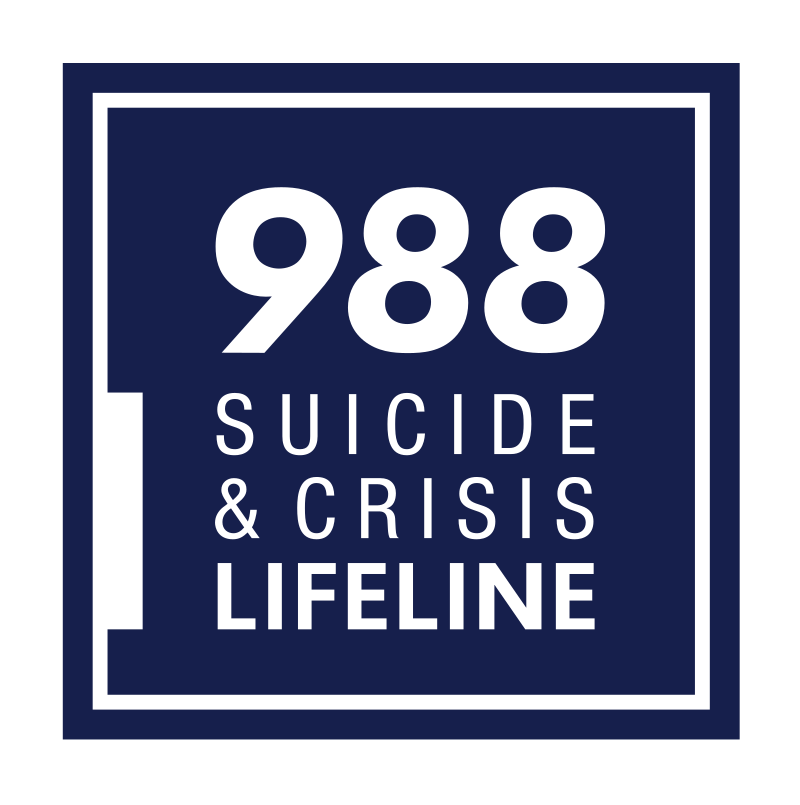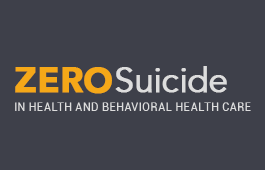Suicide prevention

The month of September is internationally dedicated to remembering the lives lost to suicide, the millions of people who have struggled with suicidal ideation, and acknowledge the individuals, families, and communities that have been impacted. World Suicide Prevention Day (WSPD) was established in 2003 by the International Association for Suicide Prevention in conjunction with the World Health Organization (WHO) to dedicate September 10 of each year to focus attention on the issue, reduce stigma, and raise awareness through a singular message that suicides are preventable.
WHO’s statistics indicate that suicide happens across the lifespan and is a global phenomenon impacting all regions in the world. The latest mortality rates indicate that approximately 720,000 lives are lost to suicide every year. The prevalence and impact of suicide makes it a global public health crisis.
As an accreditor, it is incumbent upon CARF International to fulfill our responsibility to raise awareness of the risk of suicide. We advocate for vigilance from all health and human services organizations, providers, and the public to recognize suicidal behavior cues in persons served.
Following our publication of Quality Practice Notice on Suicide Prevention, we published standards for Comprehensive Suicide Prevention Programs in 2017. Further, we added an assessment standard that requires programs accredited under CARF’s Behavioral Health and Opioid Treatment Program Standards Manuals to conduct suicide risk screening for all persons served ages 12 and older. Standards for risk assessment of persons served are included in all CARF standards manuals.
The National Action Alliance for Suicide Prevention (Action Alliance) is a public-private partnership working toward initiatives of the National Strategy for Suicide Prevention. CARF International president/CEO Brian J. Boon, Ph.D. serves on the Action Alliance Executive Committee (read about the #BeThere campaign) and suicide prevention efforts in CARF standards is directed by Michael Johnson, Senior Managing Director of Behavioral Health.
U.S. Department of Health and Human Services released a long-term plan called the 2024 National Strategy for Suicide Prevention and Federal Action Plan. The National Strategy is a bold new 10-year, whole-of-society approach that provides concrete recommendations for addressing gaps in the suicide prevention field.
Information for providers
Resource center
Suicide Prevention Resource Center (SPRC) is the only federally supported resource center devoted to advancing the implementation of the National Strategy for Suicide Prevention. SPRC is funded by the U.S. Department of Health and Human Services’ Substance Abuse and Mental Health Services Administration (SAMHSA). The SPRC recently posted this video, titled “The Foundations of Lived Experience,” interviewing people with suicide-centered lived experience and sharing their stories.
Care transitions
The National Action Alliance for Suicide Prevention created a website section with several resources for individuals with suicide risk who transition from inpatient to outpatient care (reports, handouts, and video). The information and resources demonstrate evidence-based practices that health systems can take to improve patient engagement and safety during the transition from inpatient to outpatient behavioral health care.
Suicide prevention training

The Clinical Workforce Preparedness Task Force (affiliated with the Z Action Alliance), has published Suicide Prevention and the Clinical Workforce: Guidelines for Training. We reference this publication in our Quality Practice Notice on Suicide Prevention.
Resources in the standards manuals
Numerous resources for suicide prevention and other important topics are available in Appendix D of the standards manuals. Refer to a CARF standards manual or go to the Resources section in Customer Connect.
American Hospital Association
The American Hospital Association is shining a national spotlight on suicide as a national public health issue. There is a variety of resources covering a wide range of topics on its website.
Resources focused on children and youth
Substance Abuse and Mental Health Services Administration (SAMHSA) has a variety of valuable resources located at Suicide and Suicide Prevention Resources.
The Ask Suicide-Screening Questions (ASQ) Toolkit, is a useful National Institute of Mental Health resource for child and youth services organizations. The kit was developed in three pediatric Emergency Departments. The early identification and treatment of patients at elevated risk for suicide is a key prevention strategy.
The American Academy of Pediatrics has an educational resource to support pediatric health clinicians called Suicide: Blueprint for youth suicide prevention.
Zero Suicide movement
For systems dedicated to improving patient safety, Zero Suicide presents an aspirational challenge and practical framework for system-wide transformation toward safer suicide care. A film, After Your Child’s Suicide Attempt, is a free resource for providers, schools, and community organizations. The one-hour film answers questions often raised by caregivers and describes best practices in suicide care that parents can go back to in the days and weeks following their child’s suicide-related crisis. The film was created jointly by the Zero Suicide Institute at the Education Development Center and Parents to Parents, a non-profit film maker.
Connections for the public
Transforming crisis care in America
Since July 2022, dialing “988” routes calls to the National Suicide Prevention Lifeline. The 988 Lifeline is for dialing, texting, chat and Deaf/HoH for direct connection to compassionate, accessible support for anyone experiencing substance use issues, a suicidal crisis, or mental health-related distress. CARF proudly joins the National Action Alliance for Suicide Prevention and more than 250 organizations collaborating as promoters of this important service.
988 Facts

The implementation of 988 has strengthened and expanded the lifeline call-center infrastructure and its capacity to ensure that trained crisis counselors are available by phone, text, and chat. It has built a robust nationwide crisis response system that links callers to community-based providers who can deliver a full range of crisis care services (e.g., mobile crisis teams or stabilization centers), if needed.
CARF strongly supports this effort to streamline access to assistance. This change is the direct result of work by a vast array of stakeholders recognizing the need for lifesaving action, culminating in a strong federal response to suicide.
A global role in suicide prevention
The International Association for Suicide Prevention is dedicated to preventing suicide and suicidal behavior and to alleviating its effects. IASP leads the global role in suicide prevention by providing a proactive forum to create strong collaborative partnerships and promoting evidence-based action in order to reduce the incidence of suicide and suicidal behavior.
American Psychological Association Resources
The American Psychological Association offers suggestions, as well as a variety of articles and resources for suicide prevention.
Canadian Resources
The Federal Framework for Suicide Prevention document created by the Government of Canada was developed in recognition of those lost by suicide and the many Canadians who continue to struggle with thoughts of suicide. The Framework recognizes those who are affected by suicide, those who have survived suicide loss, and those who have survived a suicide attempt and who are healing.
The Canadian Association for Suicide Prevention has a website full of resources. The organization envisions a Canada without suicide and a world in which people enjoy an optimal quality of life, are long living, socially responsible and optimistic about the future..
For information on suicide statistics, prevention, risk factors, and resources go to the Government of Canada suicide prevention.
The Mental Health Commission of Canada has a Public Resources page that is filled with several different resources on mental health and suicide prevention, including fact sheets and guides for individuals of all ages and backgrounds.
Resources focused on children and youth
A film, After Your Child’s Suicide Attempt, is a free resource. The aftermath of a child’s suicide attempt can be a deeply confusing, scary, and emotional time for parents and caregivers. Hearing directly from parents who have been there can be especially supportive. The hour-long show can be watched in its entirety or by chapters. Besides the film, a large variety of resources have been created to enhance the film, click on the Resources Tab. The movie was created jointly by the Zero Suicide Institute at the Education Development Center and Parents to Parents, a non-profit film maker.
The Centers for Disease Control and Prevention (CDC) sees the goal of suicide prevention as the reduction of factors that increase risk and to increase factors that promote resilience. It has a robust Suicide Prevention section.
The Trevor Project is focused on suicide prevention efforts among lesbian, gay, bisexual, transgender, queer, and questioning youth.
From The American Foundation for Suicide Prevention—Teens and suicide: What parents should know. Risk factors and warning signs, how to talk to your teen, and how to protect your teen or tween from suicide risk.
Suicide prevention: 12 things parents can do on the Healthy Children site by the American Academy of Pediatrics reviews the factors that can increase a child’s risk for suicide and explores 12 suggestions for prevention and help.

